Introduction
Local Organic Demand, but No Supply
Blue Boat Foods will be able to uniquely supply the “local organic” demand in New England all year round by initially targeting The 2011 Dirty Dozen.
The 2011 Dirty Dozen include (in order of most contaminated):
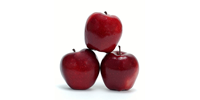 Apples
Apples Celery *
Celery *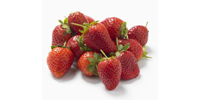 Strawberries *
Strawberries *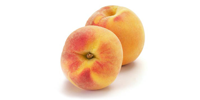 Peaches
Peaches Spinach *
Spinach *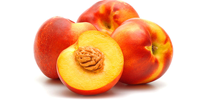 Nectarines (imported)
Nectarines (imported)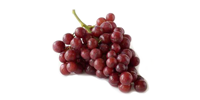 Grapes
Grapes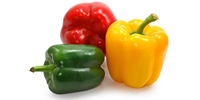 Sweet Bell Peppers *
Sweet Bell Peppers * Potatoes
Potatoes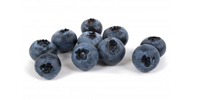 Blueberries
Blueberries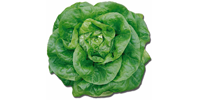 Lettuce *
Lettuce *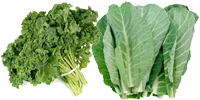 Kale & Collard Greens (tie for 12th place) *
Kale & Collard Greens (tie for 12th place) *
* Products Blue Boat Foods will provide in Phase 1.
To Infinity and Beyond…
Blue Boat Foods is going to be doing what no other company has been able to or even attempted to do before. We will be growing local organic fruit and vegetables 12 months a year in New England using only Aquaponics and renewable energy sources because New Englander’s don’t just want local organic a few months out of the year, they want local organic all year round. Just because we get devastating Nor’easters doesn’t meant we have to eat roots all winter long.
“Freshness, energy conservation and contributing to the regional economy are among the reasons people offer for buying local food. It’s a growing trend across the country.” – http://articles.cnn.com/2007-08-31/living/buying.local.food_1_farmers-markets-100-mile-diet-local-farmers?_s=PM:LIVING
“…Weather also adds a level of difficulty to the local challenge in places where temperatures routinely get below freezing in winter, says Pirog. It does not mean cold places shun 100-mile diets, it just takes more effort. While local eaters from Massachusetts or New York State eat a lot of root vegetables over the winter and rely on their preserves, those in warm weather areas like California have a much larger variety of fresh fruits and vegetables….” – http://www.sciencemetropolis.com/contributions/the-100-mile-diet/
12 Month Growing Season In New England? Problem Solved!
No Seriously. Blue Boat Foods (with a lot of help from Nelson and Pade) has solved that problem. In New England growing delicate fruits and vegetables all year round is obviously very difficult due to the winter weather conditions coupled with traditional growing techniques, but Nelson and Pade’s winterized Green Houses have been standing up to harsh Wisconsin winters since 2006:
http://seedstock.com/2011/04/20/nelson-and-pade-inc-literally-synonymous-with-aquaponics/
“In 2006-2007 Nelson and Pade, Inc. relocated the company from California to Wisconsin. According to Nelson, one prominent reason for the move was that the “need for a system that can produce year round” and “meet the demand for local and sustainable food” is much greater in Wisconsin with its harsh winters than in sunny California where the soil and weather is ideal year round.”
Net-Zero
Keep it Local Baby!
Within a 100-mile radius of the Company’s location, there are zero competitors and at least 67 resellers of Natural Foods indicating a strong ability to capitalize on this new market trend without competition, especially in the off-season when the demand is highest and the supply is nonexistent.
View Natural Food Stores in Massachusetts in a larger map
Aqua-What? Aquaponics!
Blue Boat Foods will primarily use Aquaponics to further increase our production. Aquaponics is a combination of Aquaculture and Hydroponics. Each of those systems has problems when used separately, however when used in conjunction with each other, they both solve the problems that the other system has. It’s remarkable actually.

The following is an excerpt from Wikipedia regarding Aquaponics:
Aquaponics (pronounced: /ˈækwəˈpɒnɨks/) is a sustainable food production system that combines a traditional aquaculture (raising aquatic animals such as fish, crayfish or prawns in tanks) with hydroponics (cultivating plants in water) in a symbiotic environment. In the aquaculture, effluents accumulate in the water, increasing toxicity for the fish. This water is led to a hydroponic system where the by-products from the aquaculture are filtered out by the plants as vital nutrients, after which the cleansed water is recirculated back to the animals. The term aquaponics is a portmanteau of the terms aquaculture and hydroponic.
The unique advantages of aquaponic systems are:
- Conservation through constant water reuse and recycling.
- Organic fertilization of plants with natural fish emulsion.
- The elimination of solid waste disposal from intensive aquaculture.
- The reduction of needed cropland to produce crops.
- The overall reduction of the environmental footprint of crop production.
- Building small efficient commercial installations near markets reduces food miles.
- Reduction of pathogens that often plague aquaculture production systems.
Some conceivable disadvantages with aquaponics are:
- Initial expenses for housing, tank, plumbing, pumps, and grow beds.
- The infinite number of ways in which a system can be configured lends itself to equally varying results, conflicting research, and successes or failures.
- Some aquaponic installations rely heavily on man-made energy, technological solutions, and environmental control to achieve recirculation and water/ambient temperatures. However, if a system is designed with energy conservation in mind, using alternative energy and a reduced number of pumps by letting the water flow downwards as much as possible, it can be highly energy efficient.
- While careful design can minimize the risk, aquaponics systems can have multiple ‘single points of failure’ where problems such as an electrical failure or a pipe blockage can lead to a complete loss of fish stock.
- Like all aquaculture based systems, stock feed usually consists of fish meal derived from lower value species. Ongoing depletion of wild fish stocks makes this practice unsustainable. Organic fish feeds may prove to be a viable alternative that negates this concern. Other alternatives include growing duckweed with an aquaponics system that feeds the same fish grown on the system,[18] excess worms grown from vermiculture composting, as well as growing black soldier fly larvae to feed to the fish using composting grub growers.[19]
The only input to an Aquaponic system is fish food for the fish and electricity for the electrical systems. Duckweed is a perfect natural food for Tilapia and is a very fast growing self-replicating or asexually reproducing plant. Duckweed in combination with organic fish feeds yields the highest growth rate. The electrical needs will be supplied by the combination of a Solar PV Panel array and the vertical wind turbines. The electrical heating system will ultimately be a back-up system to the primary heating system. The primary heating system will be a combination of geo-thermal (constant 55 degrees F), passive radiant solar (greenhouse effect from specially designed winterized greenhouses) solar water heaters and compost water heaters. Conventional electrical heaters connected to the solar and wind powered battery array can be used as a backup heating system to ensure constant optimal atmospheric air and water temperatures for the entire aquaponic system. Again all vital systems will be constantly monitored and any deviation from optimal operational ranges will result in an alert via SMS text message and email to all Blue Boat Foods members. Each member will have access to a limited access web portal where the entire Aquaponic system can be managed. If the problem cannot be resolved remotely for some reason, someone going onsite can resolve it quickly.
Here is a great video that explains how Aquaponics works:
To increase awareness of its business, Blue Boat Foods intends to launch a creative promotional campaign. Marketing channels will include the use of a public facing website with the best in class Search Engine Optimization (SEO), limited direct print media advertisements, hosting of a grand opening event, word of mouth referrals and Internet advertising channels via Google AdWords. Through these efforts Blue Boat Foods will establish its reputation as a trusted provider of local organic fruits and vegetables that attempt to cut the Dirty Dozen in half and supply the needs of people who are participating in the 100-mile diet.
Ownership
Reinvestment
Blue Boat Foods will develop products in three phases:
Solve the previously mentioned 6 fruits and vegetables in the Dirty Dozen list
 Celery
Celery Strawberries
Strawberries Spinach
Spinach Sweet Bell Peppers
Sweet Bell Peppers Lettuce
Lettuce Kale & Collard Greens (tie for 12th place)
Kale & Collard Greens (tie for 12th place)
Solve the remaining 6 fruits and vegetables in the Dirty Dozen list
 Apples
Apples Peaches
Peaches Nectarines (imported)
Nectarines (imported) Grapes
Grapes Potatoes
Potatoes Blueberries
Blueberries
Incorporate Permaculture into the entire business
Core Values
Permaculture design and practice is based on three core values or ethics:
- Care of the Earth: Provision for all life systems to continue and multiply.
- Care of People: Provision for people to access those resources necessary for their existence.
- Setting Limits to Population and Consumption: By governing our own needs, we can set resources aside to further the above principles.[7]
Blue Boat Food’s Inspiration
Peter Mayer’s song Blue Boat Home reminds me just how beautiful and magnificent Mother Earth really is. That’s why I started Blue Boat Foods, because I wanted to grow food the way Mother Earth intended. Aquaponics is as close to a natural growing process as you can get and once the system is online, the natural growing process takes over. The only inputs to the system are fish food and power. The fish food will be fast growing and self-replicating duckweed, and all the power will come from multiple renewable energy sources. It’s virtually self sustaining, dare I say a perpetual motion machine. Aquaponics breaks the barrier of seasonal growing and allows growers to produce products 12 months a year as long as the environmental conditions are balanced.

This is such an exciting addition to the local food scene here on the North Shore! I am so looking forward to the first crop!
Any carnivore. (Except hiccilds that like to tear up a tank) Bettas, some tetras, guppies (in my personal experience, guppies do not go after plant roots). Powered by Yahoo! AnswersYour Questions About Aquaponics Systems Answered Linda asks… Bugs in Aquaponics system? I have an lass=”dtm-content”>
Hey guys, I have a small lake/large pond in my backyard and was wediornng if it would be feasible to take 2 old Sunfish Hulls, build a pvc greenhouse frame over them and use the water straight from the pond for a now Floating Greenhouse? I believe these boats have a foam inside and won’t sink beyond a point. And, the body of water is over 80yrs old with a underground spring supplying so it has a established ecosystem already. Hoping a floating water filter will allow for a denser fish ratio.
i saw a aquaponics site that has non gmo fish for sale .anybody cerconned about having good food should try to get all non gmo vegs and meats .don’t know what gmo is? look it up, its freaky what [mostly america] is being allowed to be dna altered .spread the word these gmo’s will make all normal foods die off because MONSANTO has developed plants to resist the herbicides that will kill everything but the monsanto plants .we are talking extinction of known veggies!
Enjoyed reading this, very good stuff, appreciate it. “Shared joys make a friend, not shared sufferings.” by Friedrich Wilhelm Nietzsche.